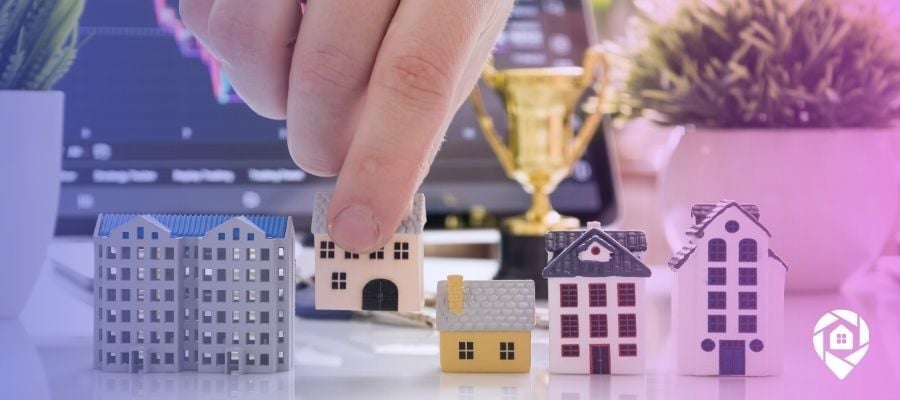
ADU Investing in 2025: The Playbook Behind a $100M Portfolio

A Seattle-based investor rose from a refugee shelter to owning over $100 million in real estate. Thach Nguyen invests only his own capital, avoids syndications, and collects over $100,000 a month in passive income. His story blends practical playbooks, market timing, and a life philosophy centered on peace of mind, family, and giving back.
His 3 Investment Lanes: Single-Family, Multifamily, Apartments
He operates across three focused areas:
- Value-add single-family homes with ADU potential
- Ground-up multifamily projects like townhomes
- Apartment buildings either renovating or building from scratch
In single-family, Thach only buys on lots that allow for one or more ADUs. For multifamily, he builds from the ground up. And for apartments, he either renovates existing buildings or builds new ones. These lanes offer flexibility, but his criteria are strict: every deal must be a "no-brainer" that aligns with his values.
Why He Avoids Syndications Today
While he has experience syndicating in the past, he chooses to invest solo for peace of mind and clarity. Thach values independence and avoids the emotional weight of managing others’ money, especially in down markets.
"The flex for me is peace of mind."
He now invests with intention, focuses on long-term wealth, and only takes on projects that serve both his financial goals and lifestyle.
Watch the full interview to hear his journey from refugee shelter to $100M real estate portfolio and how ADUs are reshaping the future of investing.
Why ADUs Are His Top Investment Play
ADUs (Accessory Dwelling Units) provide the best return on time, money, and energy. In cities experiencing a housing crisis, they are now legal and even incentivized.
Numbers That Prove the ADU Model Works
- Build Cost: ~$350,000
- Finished Value: ~$700,000
- Monthly Rent: ~$3,500
This meets the 1% rule even in a high-cost market like Seattle. It creates instant equity and solid monthly cash flow.
BRRRR Strategy + ADUs = Explosive Wealth Building
By combining BRRRR (Buy, Rehab, Rent, Refinance, Repeat) with ADU construction, he maximizes sweat equity and cash flow. The land is already owned, so the cost basis is limited to construction. This model works even in today’s higher interest rate environment.
"BRRRR strategy and ADU combined together is like Bitcoin at 2010."
The Policy Shift: Splitting ADUs for Added Value
Washington and California now allow ADUs to be sold separately. Seattle was the first mover. As other states follow, this creates additional appreciation and exit opportunities for savvy investors.
His Take on Market Cycles
Thach has experienced four market cycles. His model is based on a 10-year framework:
- 8–10 years of growth
- 2–3 years of correction
We are now, he believes, at the start of a new growth cycle.
"You don’t get hurt unless you sell."
Housing demand remains high. The U.S. is short 5 to 8 million homes. He advises buying deals that work at today’s rates (6–7%) and refinancing when rates drop.
Lessons From the Last Crash
The Condo Collapse and What It Taught Thach
During the Great Recession, he co-developed a 251-unit condo project. When the market tanked, 200 buyers backed out. He pivoted to leasing it as apartments. Despite pressure from the lender, he managed to sell it and return most of the investors’ money, taking only a 20% loss.
Crisis Management and Earning Back Trust
He personally delivered checks to each investor. Many told him they’d back him again. He learned three key lessons:
- Big projects need deep pockets
- Partners must act quickly in downturns
- Transparency and effort earn lifelong respect
Mindset Shifts: From Fast Money to Long-Term Wealth
The Microwave vs. Marathon Mindset
Early in his career, he was focused on wholesaling and flipping. Now, he emphasizes balance.
"Active income makes you rich. Passive income makes you wealthy."
Passive Income is the Wealth Engine
He started by asking: “What monthly income do I need to live comfortably?” At $2,000 rent per home, ten homes producing $20,000/month was his goal. He bought slowly, using down payments, then traded up or paid off properties to reduce risk and build options.
His No-Stress Investing Philosophy
The Simple Habits That Keep Him Grounded
His daily routine includes:
- Saying “no” more often than “yes” to deals
- Daily exercise
- Writing 10 gratitudes and 10 goals each morning
These habits, he says, have helped him maintain calm through four downturns.
Why Bigger Isn’t Always Better
He avoids high-leverage deals or ones that create unnecessary stress. His focus is on high ROI, clear alignment with values, and local familiarity.
How He Finds the Best Real Estate Deals
Old-School Prospecting with a New-School Lens
He targets lots with:
- At least 5,000 sq ft
- Alley or corner access
- Higher land value than the structure
- Long-term ownership and low debt
His team cold-calls, door-knocks, and follows up consistently. He’s built a reputation as a reliable buyer who improves neighborhoods.
Filtering for “No-Brainer” Properties
He only buys:
- Single-family homes with ADU potential
- Ground-up townhome multifamily
- Apartment projects in familiar Seattle markets
Every deal must pass through his core values filter.
A Life Built on Values, Not Just Net Worth
Investing With Purpose and Giving Back
Raised in a refugee shelter, he was sponsored by a volunteer named Charles Zetler. That act of generosity became his life mission.
Now, he:
- Provides permanent housing for shelter families
- Builds soccer fields in low-income neighborhoods
- Partners with nonprofits to create long-term community impact
Raising a Financially Literate Family
His children have co-invested in flips and own coin-operated laundry machines in his rental units. He leads by example and teaches them to buy rentals, even if real estate isn’t their main career.
Advice for Starting From Zero
- Learn a few neighborhoods deeply
- Wholesale or flip across A, B, C, and D markets
- Keep the best B and C properties as rentals
- Target 25% margin after rehab
- Use refinancing to pull capital back out and repeat
This model builds capital and long-term wealth without relying on outside money.
Final Thoughts: Build Wealth With Peace, Not Pressure
"Time is the only thing we got."
He prioritizes family and health over flashy success. True wealth, in his view, is measured by time freedom, peace of mind, and impact—not the number of properties or cars.
FAQ: Building Wealth Through Real Estate and ADUs
What is an ADU in real estate investing?
An Accessory Dwelling Unit (ADU) is a second housing unit built on the same lot as a primary home. Investors use ADUs to increase rental income and property value without buying more land.
Why are ADUs a good investment strategy in 2025?
With cities relaxing zoning laws and a national housing shortage, ADUs offer high cash flow, strong equity gains, and now resale potential as separate properties in some states.
How can I start investing in real estate with no money?
Start by learning your local market, wholesaling, or flipping for quick capital, then reinvest into rentals. Focus on deals that can cash flow at today’s interest rates and offer ADU potential.
What’s the difference between active and passive income in real estate?
Active income comes from work-heavy strategies like flipping or wholesaling. Passive income comes from rental properties that generate monthly cash flow without daily involvement.
Should I syndicate deals or invest solo?
Syndications can scale faster, but add pressure from investor obligations. Solo investing offers more control, clarity, and peace of mind, especially in uncertain markets.

About Maria Tresvalles
Maria Tresvalles is the dynamic Marketing Specialist at DealMachine, where she has been a key player for the past five years. With a strong background in customer relations, Maria started her journey at DealMachine as a Customer Success Coordinator, where she honed her skills in understanding customer needs and driving satisfaction.


